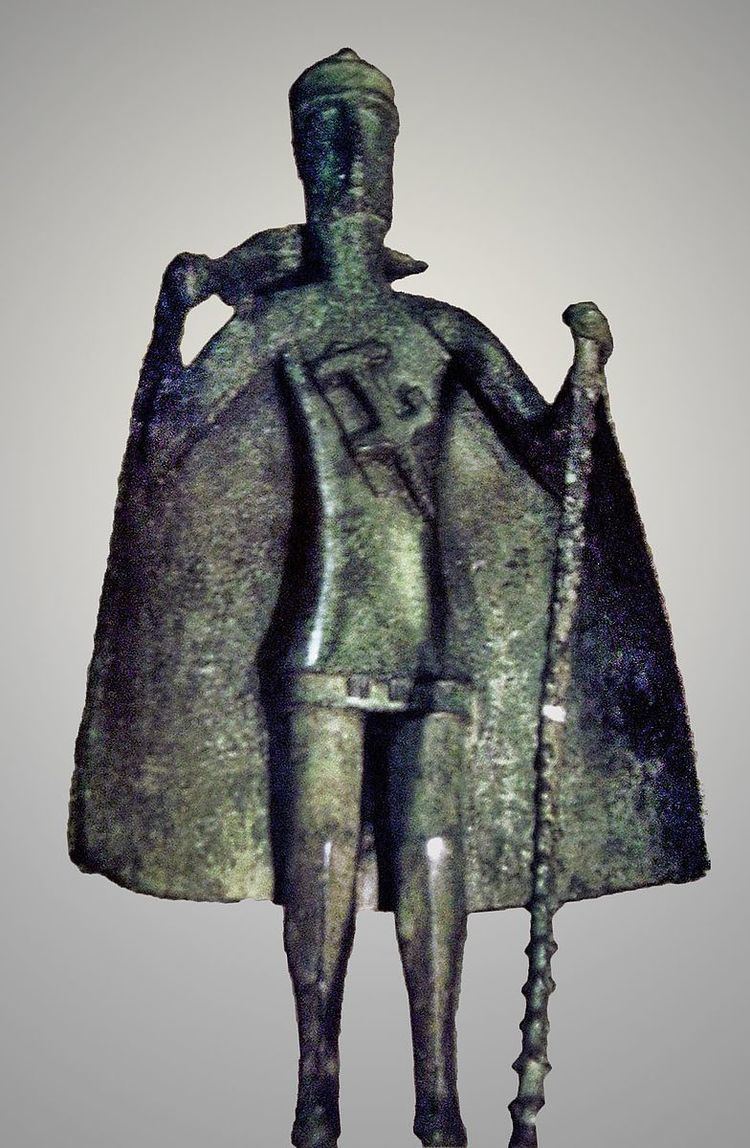 | ||
The Ilienses (or Iolaes, later known as Diagesbes) were an ancient Nuragic people who lived during the Bronze and Iron Ages in central-southern Sardinia. After the Sicilian Wars began with a Punic invasion in the sixth century BC, part of them retreated in the mountain region in the interior of the island from where they opposed to the invaders for centuries.
Contents
Mythological origins
According to the legend recorded by Greek historians, the etymology of their name (Iolaes) is to be traced back to Iolaus, the hero who led the Thespiades, sons of Heracles and the daughters of Thespius (king of the Boeotian city-state of Thespiae) in Sardinia, where he founded a colony. Another myth tell that the old inhabitants of Ilium, better known as Troy, after the fall of the city established themselves in this part of Sardinia (where they mixed with the Iolaes), hence the name of Ilienses. Pomponius Mela considered the Ilienses as the oldest people of the island.
Nuragic period
In the nuragic period their territory extended from the plain of Campidano (called in antiquity Iolean plain) to the Tirso river in north where began the territory of the Balares. They were probably divided into 40 tribes, each ruled by a king or chieftain. These rulers lived in the complex nuraghi, called "polilobates", such as Su Nuraxi of Barumini.
In what was once their territory, very important are the finds of Mycenaean artifacts, confirming the important exchanges between these two ancient peoples. Of particular interest are also the Oxhide ingot, perhaps coming from Cyprus, discovered in various locations, including the Cagliari area, in the province of Ogliastra and other central areas. Between 1300 and 1200 BC in central-southern Sardinia was produced a kind of gray pottery also called "gray Sardinian"; remains of this type of pottery have been found in Kommos, Crete, and at Cannatello near Agrigento, Sicily.
According to the archaeologist Giovanni Ugas the Ilienses were the most important population of Nuragic Sardinia and they can perhaps be connected with the Sherden, one of the Sea Peoples widely cited in Ancient Egyptian sources. This hypothesis has been however opposed by other archaeologists and historians.
Punic and Roman period
As witnessed by the ancient sources (Diodorus Siculus, Bibliotheca historica and Pausanias, Description of Greece) since the sixth century BC this population opposed fiercely to the domination of Carthage. After the end of the First Punic War in 238 BC the Romans occupied the main strongholds of the Punic Sardinia, but the people of the interior opposed even to the new invaders.
In 227 BC, Corsica and Sardinia became the second Roman province (the first was Sicily). The outbreak of the Second Punic War and the victories of Hannibal in the Italian Peninsula provoked new stirrings of rebellion in Sardinia where, after the Roman defeat at the Battle of Cannae, the Sardinian-Punic landowner and military Hampsicora, helped by the Carthaginians and by Ilienses, organized a new uprising. In 215 BC the rebels were defeated and massacred in the battle of Decimomannu by Titus Manlius Torquatus and so Carthage lost the island definitively.
In Roman times the Ilienses and the Balares of the interior continued to resist, but in 177 BC they were heavily defeated by the consul Tiberius Gracchus the Elder who killed or enslaved about 80,000 Sardinians. However still in imperial time they were not completely subjugated by Rome and continued to live relatively independently in the central region called Barbagia.
